Introduction:
Many Visitors want to know Where to Stay in Buenos Aires. In this guide, we will uncover 8 most attractive places. These enchanting places are Palermo, Recoleta, San Telmo, Microcentro, Puerto Madero, Belgrano, Villa Crespo and Almagro.
Buenos Aires, the vibrant capital of Argentina, is a city that captivates visitors with its rich cultural heritage, diverse neighbourhoods, and dynamic urban life. Known for its European-style architecture, passionate tango, and delectable cuisine, Buenos Aires offers an array of experiences that cater to every type of traveller.
However, choosing the right neighbourhood to stay in is crucial to fully enjoying all this city offers. Each neighbourhood, or “barrio,” in Buenos Aires has its unique charm and atmosphere, and deciding where to stay is an important one for maximizing your visit.
Whether you’re drawn to Palermo’s bohemian streets, Recoleta’s historic elegance, or the modern allure of Puerto Madero, there’s a perfect spot for everyone.
In this article, we will guide you through the best neighbourhoods to stay in Buenos Aires, providing insights into what makes each area special and who it best suits. Our goal is to help you find the ideal place to stay based on your preferences, interests, and travel style, ensuring a memorable and enriching experience in this remarkable city.
Table of Contents
1. Overview of Buenos Aires Neighborhoods
Buenos Aires is a sprawling metropolis composed of distinct neighbourhoods, each offering its unique flavour and attractions. The city’s diverse character is reflected in the variety of its barrios, ranging from historic and bohemian quarters to modern and upscale districts.
Understanding the layout and personality of these neighborhoods is key to selecting the perfect place to stay during your visit.
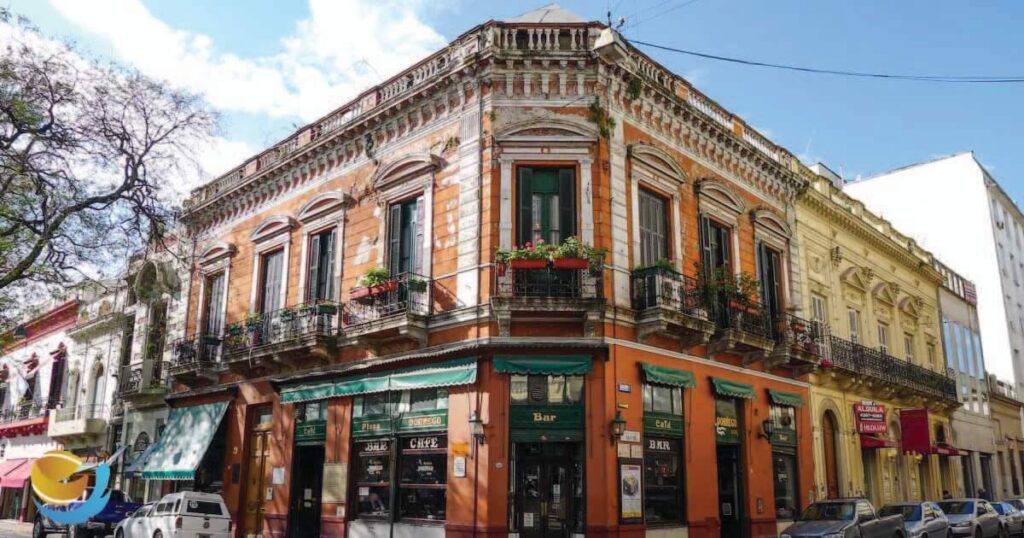
General Layout of the City
- Buenos Aires is divided into several neighborhoods, each with a unique atmosphere.
- The city center, known as Microcentro, is the heart of Buenos Aires and is surrounded by various vibrant neighborhoods.
- The Rio de la Plata river forms the eastern boundary, influencing the development and character of adjacent areas like Puerto Madero.
Neighborhood Vibes
- Palermo: Known for its hip, trendy vibe, Palermo is a favorite among young travelers and expats. It’s divided into sub-neighborhoods like Palermo Soho and Palermo Hollywood, each with its distinct flair.
- Recoleta: This upscale neighborhood exudes elegance and is famous for its historic landmarks and high-end shopping.
- San Telmo: As the oldest neighborhood in Buenos Aires, San Telmo is rich in history and culture, with cobblestone streets, antique shops, and vibrant tango scenes.
- Microcentro: The bustling downtown area, filled with historic sites, government buildings, and commercial activity.
- Puerto Madero: A modern, revitalized port area featuring sleek skyscrapers, waterfront dining, and green spaces.
- Belgrano: A quiet, residential area known for its parks, museums, and a touch of suburban tranquility.
- Villa Crespo: An emerging neighborhood with a local feel, popular among budget travelers and those looking for an authentic experience.
- Almagro: Traditional and culturally rich, Almagro is the heart of tango culture and local theaters.
Choosing the Right Neighborhood
- Your choice of neighborhood will significantly impact your experience in Buenos Aires.
- Consider factors such as safety, proximity to attractions, nightlife, and your personal preferences for a lively or serene environment.
By familiarizing yourself with the general layout and vibe of Buenos Aires’ neighborhoods, you can better decide where to base yourself during your stay. Each barrio offers a different slice of the city’s life, ensuring that there is a perfect spot for every kind of traveler.
2. Palermo
Palermo is one of Buenos Aires’ largest and most popular neighborhoods, known for its vibrant atmosphere, diverse attractions, and distinct sub-neighborhoods. It is a hub for creativity, nightlife, and gastronomy, making it a top choice for many visitors.
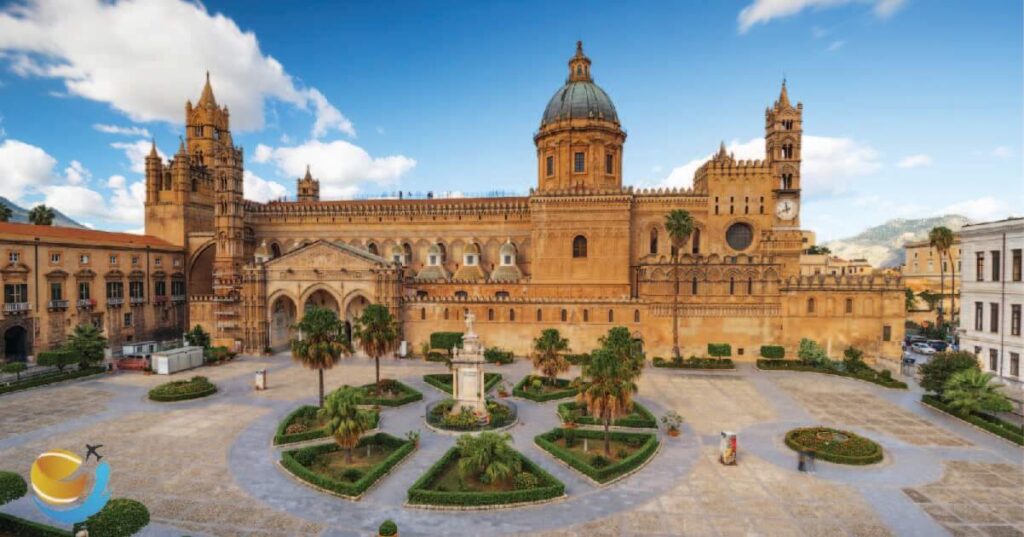
A. Palermo Soho
- Description: Palermo Soho is a trendy, bohemian area characterized by its artistic vibe, colorful street art, and stylish boutiques.
- Attractions:
- Plaza Serrano: A lively square surrounded by cafes, bars, and shops, often hosting weekend markets.
- Boutiques and Designer Stores: An array of independent fashion stores and local designers.
- Cafes and Restaurants: Numerous hip cafes and gourmet restaurants offering international and Argentine cuisine.
- Nightlife: Vibrant nightlife with an array of bars, clubs, and live music venues.
- Who Should Stay Here:
- Young travelers looking for a lively and trendy atmosphere.
- Couples and solo travelers who enjoy shopping, dining, and nightlife.
- Creative types and artists seeking inspiration.
B. Palermo Hollywood
- Description: Named for its concentration of TV and radio studios, Palermo Hollywood is known for its dynamic entertainment scene and diverse dining options.
- Attractions:
- Restaurants: A gastronomic hotspot with a variety of restaurants offering everything from traditional Argentine steak to international cuisine.
- Bars and Breweries: Numerous bars and craft breweries, making it a great spot for nightlife enthusiasts.
- Media Studios: Presence of media and production companies, adding to the neighborhood’s bustling energy.
- Who Should Stay Here:
- Foodies eager to explore a wide range of dining experiences.
- Nightlife enthusiasts looking for trendy bars and clubs.
- Travelers interested in the media and entertainment industry.
C. Palermo Chico
- Description: A more upscale and residential part of Palermo, known for its elegant architecture and leafy streets.
- Attractions:
- Parks and Green Spaces: Beautiful parks such as Parque Tres de Febrero, offering a peaceful retreat from the city bustle.
- Museums: Cultural landmarks like the MALBA (Museo de Arte Latinoamericano de Buenos Aires) showcasing modern Latin American art.
- Embassies and Mansions: Elegant embassies and historic mansions contributing to the neighborhood’s sophisticated ambiance.
- Who Should Stay Here:
- Families seeking a safe and quiet area with plenty of green spaces.
- Luxury travelers looking for upscale accommodation.
- Art and culture enthusiasts interested in nearby museums and galleries.
Summary
Palermo offers a mix of experiences catering to different types of travelers. Whether you’re drawn to the artistic flair of Palermo Soho, the culinary delights of Palermo Hollywood, or the upscale tranquility of Palermo Chico, this neighborhood provides a vibrant and diverse backdrop for your stay in Buenos Aires.
3. Recoleta
Recoleta is one of Buenos Aires’ most elegant and affluent neighborhoods, known for its European-style architecture, cultural landmarks, and high-end amenities. Often compared to Paris, Recoleta is a hub of sophistication and history, making it an ideal destination for travelers seeking a luxurious and culturally rich experience.
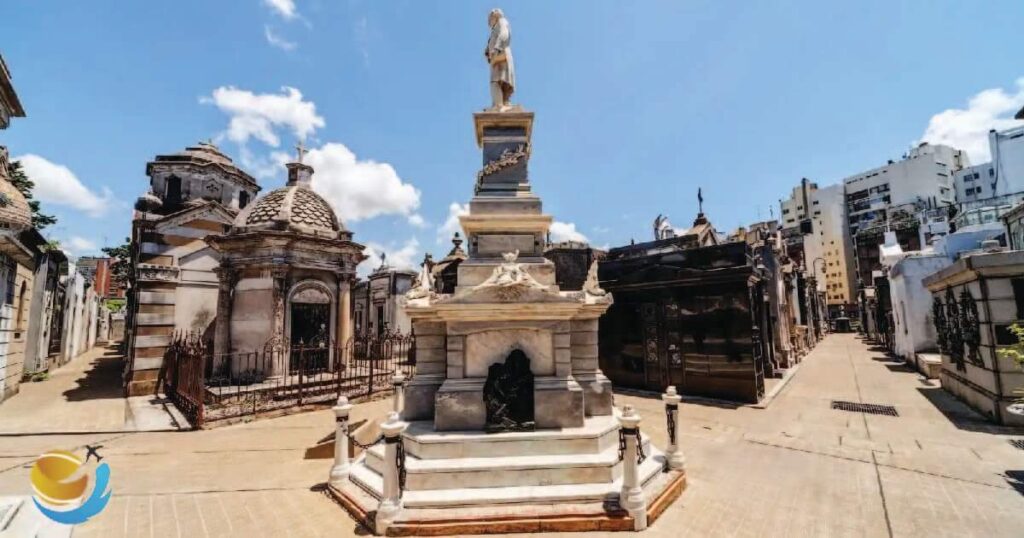
Description
Recoleta exudes old-world charm with its grand mansions, tree-lined avenues, and stately plazas. It is a center of cultural and historical significance, with many of the city’s most important museums, galleries, and monuments located here. The neighborhood is also known for its upscale shopping and dining options, offering a refined experience for visitors.
Attractions
- Recoleta Cemetery: A world-renowned cemetery famous for its elaborate mausoleums and as the resting place of Eva Perón. It is a must-visit for its architectural beauty and historical significance.
- Museo Nacional de Bellas Artes: The National Museum of Fine Arts houses a vast collection of European and Argentine art, including works by Goya, Van Gogh, and local artists.
- Centro Cultural Recoleta: A dynamic cultural center offering contemporary art exhibitions, theater performances, and workshops.
- El Ateneo Grand Splendid: A stunning bookstore housed in a former theater, often cited as one of the most beautiful bookstores in the world.
- Plaza Francia: A bustling plaza known for its weekend artisan market and outdoor performances, perfect for a leisurely stroll.
Who Should Stay Here
- History Buffs: Those interested in Argentina’s rich history will appreciate the numerous historical landmarks and museums.
- Luxury Travelers: Recoleta offers some of the finest hotels, dining, and shopping in Buenos Aires, catering to those seeking a high-end experience.
- Cultural Enthusiasts: With its wealth of museums, galleries, and cultural centers, Recoleta is ideal for travelers who enjoy immersing themselves in art and culture.
- Families: The neighborhood’s safe, clean streets and abundance of parks make it a great choice for families.
Summary
Recoleta stands out as a neighborhood of elegance and culture, offering visitors a taste of Buenos Aires’ refined side. With its historic landmarks, high-end amenities, and rich cultural scene, Recoleta is perfect for travelers seeking a sophisticated and enriching experience in the city.
Whether you’re wandering through the famed cemetery, admiring masterpieces in the National Museum of Fine Arts, or simply enjoying a coffee in a charming cafe, Recoleta promises a memorable and luxurious stay.
4. San Telmo
San Telmo is the oldest neighborhood in Buenos Aires, renowned for its rich history, bohemian atmosphere, and vibrant cultural scene. As a district that retains much of its colonial charm, San Telmo offers visitors a unique glimpse into the city’s past and its artistic soul.
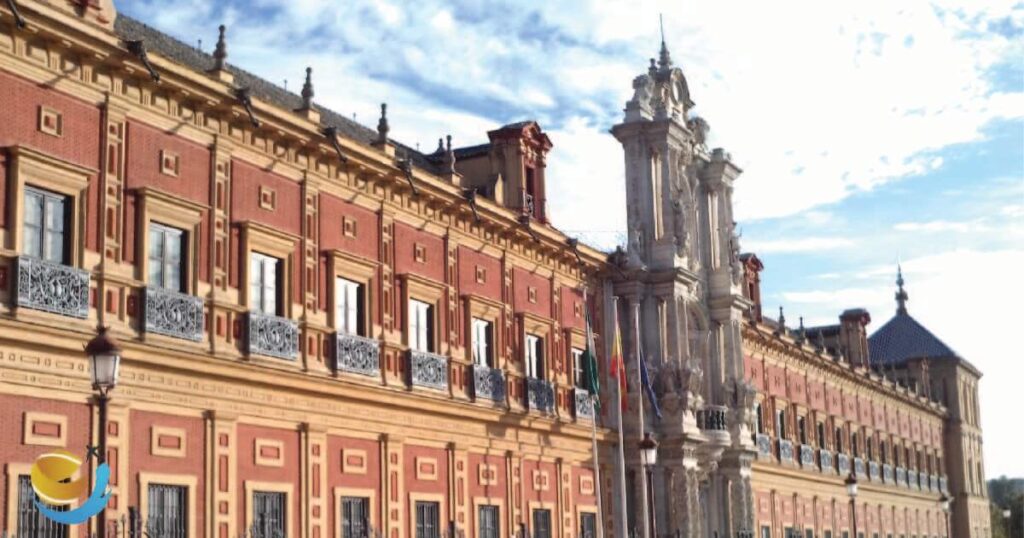
Description
San Telmo is characterized by its cobblestone streets, historic buildings, and eclectic mix of antique shops, tango bars, and street art. It is a neighborhood where the old and new coexist, creating a lively and colorful environment that attracts artists, musicians, and travelers seeking an authentic Buenos Aires experience.
Attractions
- San Telmo Market (Mercado de San Telmo): A bustling market housed in a historic building, offering everything from fresh produce and gourmet foods to antiques and handmade crafts. It’s a great place to sample local delicacies and shop for unique souvenirs.
- Plaza Dorrego: The heart of San Telmo, this historic square is surrounded by cafes and bars and hosts a famous Sunday antique market. It’s also a popular spot for street performers and tango dancers.
- Antique Shops: San Telmo is known for its numerous antique shops and boutiques, where you can find vintage treasures and unique artifacts.
- Museo Histórico Nacional: This museum provides insights into Argentina’s history, with a focus on the country’s independence and cultural heritage.
- Tango Shows and Milongas: San Telmo is a hotspot for tango, offering numerous venues where you can watch live tango performances or join a milonga (tango dance event) and dance the night away.
- Street Art: The neighborhood is adorned with vibrant murals and street art, reflecting its artistic spirit and cultural diversity.
Who Should Stay Here: Where to Stay in Buenos Aires
- Artists and Creatives: San Telmo’s bohemian vibe and artistic community make it an ideal place for creative souls seeking inspiration.
- History Lovers: With its well-preserved colonial architecture and historical sites, San Telmo is perfect for those interested in Buenos Aires’ rich past.
- Tango Enthusiasts: As a center for tango culture, San Telmo offers numerous opportunities to experience and participate in this iconic dance.
- Bohemian Travelers: Those looking for a lively, eclectic atmosphere filled with character and charm will find San Telmo to be an ideal base.
- Budget Travelers: The neighborhood offers a range of affordable accommodation options, making it a good choice for those traveling on a budget.
Summary: Where to Stay in Buenos Aires
San Telmo is a neighborhood that pulsates with history and culture. From its antique shops and historic squares to its tango clubs and street art, San Telmo provides a rich and immersive experience for visitors. Whether you’re exploring the vibrant market, watching a captivating tango show, or simply wandering through its charming streets, San Telmo invites you to step back in time and embrace the artistic heart of Buenos Aires.
5. Microcentro
Microcentro is the bustling downtown area of Buenos Aires, serving as the city’s commercial and financial heart. Known for its iconic landmarks, historic sites, and vibrant energy, Microcentro offers visitors a dynamic urban experience.
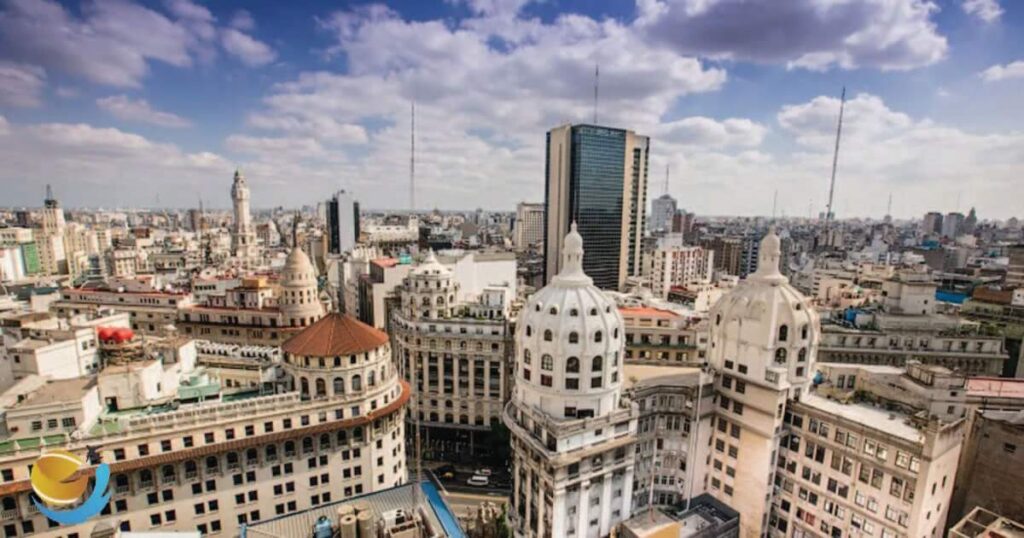
Description: Where to Stay in Buenos Aires
Microcentro is characterized by its busy streets, tall office buildings, and a mix of historic and modern architecture. It is home to major cultural, political, and economic institutions, making it a hub of activity day and night. This central neighborhood is perfect for those who want to be in the midst of Buenos Aires’ vibrant urban life.
Attractions: Where to Stay in Buenos Aires
- Obelisco: The iconic Obelisk of Buenos Aires, located on Avenida 9 de Julio, one of the widest avenues in the world. It is a symbol of the city and a popular meeting point.
- Plaza de Mayo: The main square of Buenos Aires, surrounded by significant buildings such as the Casa Rosada (Presidential Palace), the Metropolitan Cathedral, and the Cabildo (Colonial Town Hall). It is a site of historical and political importance.
- Teatro Colón: One of the world’s most renowned opera houses, offering guided tours and world-class performances. Its architecture and acoustics are stunning.
- Florida Street: A bustling pedestrian street known for its shopping opportunities, ranging from high-end stores to local boutiques and souvenir shops.
- Galerías Pacífico: A luxurious shopping mall housed in a beautiful historic building, featuring a stunning central dome decorated with murals.
- Café Tortoni: One of the oldest and most famous cafes in Buenos Aires, frequented by artists and intellectuals since its opening in 1858.
Who Should Stay Here: Where to Stay in Buenos Aires
- Business Travelers: Given its status as the financial district, Microcentro is ideal for those in Buenos Aires for business purposes.
- Tourists Wanting Central Location: Its central location provides easy access to many of the city’s major attractions, making it convenient for sightseeing.
- History and Architecture Enthusiasts: With numerous historic buildings and landmarks, Microcentro is perfect for those interested in the city’s history and architectural beauty.
- Nightlife Lovers: The area offers a variety of entertainment options, including theaters, bars, and nightclubs, ensuring a lively nightlife scene.
- First-Time Visitors: The central location and abundance of attractions make it an excellent choice for those visiting Buenos Aires for the first time.
Summary: Where to Stay in Buenos Aires
Microcentro is the vibrant heart of Buenos Aires, offering a mix of historical landmarks, cultural attractions, and modern amenities. Staying in Microcentro places you amid the city’s hustle and bustle, providing convenient access to iconic sites such as the Obelisk, Plaza de Mayo, and Teatro Colón.
Whether you’re exploring historic streets, enjoying a coffee at Café Tortoni, or shopping along Florida Street, Microcentro ensures a dynamic and enriching experience in Buenos Aires.
6. Puerto Madero
Puerto Madero is one of Buenos Aires’ most modern and upscale neighborhoods, known for its sleek skyscrapers, revitalized waterfront, and luxurious amenities. Once a bustling port area, Puerto Madero has been transformed into a vibrant urban district that blends contemporary design with natural beauty.
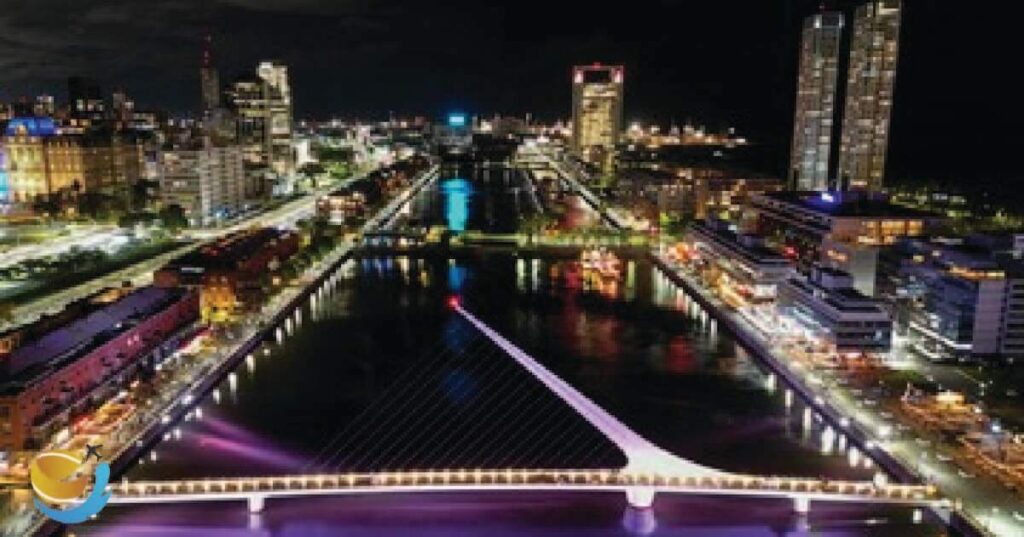
Description: Where to Stay in Buenos Aires
Puerto Madero is characterized by its striking architecture, wide promenades, and expansive green spaces. The neighborhood offers a stark contrast to the historic and bohemian areas of Buenos Aires, presenting a vision of modernity and luxury. It is a prime location for both business and leisure travelers looking for a stylish and serene environment.
Attractions: Where to Stay in Buenos Aires
- Puente de la Mujer: A striking pedestrian bridge designed by Spanish architect Santiago Calatrava, symbolizing a couple dancing tango. It is one of the most photographed landmarks in Puerto Madero.
- Reserva Ecológica Costanera Sur: A vast ecological reserve offering a peaceful retreat from the city, with walking and cycling paths, diverse flora and fauna, and scenic views of the Rio de la Plata.
- Waterfront Dining: Numerous high-end restaurants and bars line the waterfront, offering a variety of international cuisines and stunning views of the river and skyline.
- Museo Fragata Sarmiento: A historic naval frigate turned museum, showcasing Argentina’s naval history and providing insight into life at sea.
- Faena Arts Center: A contemporary art space housed in a former grain mill, hosting cutting-edge exhibitions and cultural events.
- Luxury Hotels and Residences: Puerto Madero is home to some of the city’s most luxurious accommodations, including international hotel chains and upscale residential towers.
Who Should Stay Here: Where to Stay in Buenos Aires
- Luxury Travelers: The neighborhood’s high-end hotels, gourmet dining options, and sophisticated ambiance cater to those seeking a luxurious experience.
- Business Travelers: Its proximity to the financial district and modern amenities make Puerto Madero ideal for business visitors.
- Couples: The romantic waterfront setting, elegant restaurants, and tranquil environment make it a perfect choice for couples.
- Nature Lovers: The ecological reserve provides a natural escape within the city, ideal for those who enjoy outdoor activities and wildlife.
- Modern Architecture Enthusiasts: Puerto Madero’s contemporary design and innovative architecture will appeal to those interested in modern urban development.
Summary: Where to Stay in Buenos Aires
Puerto Madero offers a glimpse into the future of Buenos Aires, with its sleek architecture, waterfront dining, and expansive green spaces. This modern and upscale neighborhood is perfect for travelers seeking luxury, tranquility, and a touch of nature.
Whether you’re strolling across the Puente de la Mujer, exploring the ecological reserve, or enjoying a gourmet meal with a view, Puerto Madero promises a sophisticated and serene stay in Buenos Aires.
7. Belgrano
Belgrano is a leafy, affluent neighborhood in Buenos Aires known for its residential charm, elegant architecture, and cultural diversity. It offers a blend of urban amenities and suburban tranquility, making it a popular choice for families and those seeking a quieter stay while still being close to the city’s attractions.
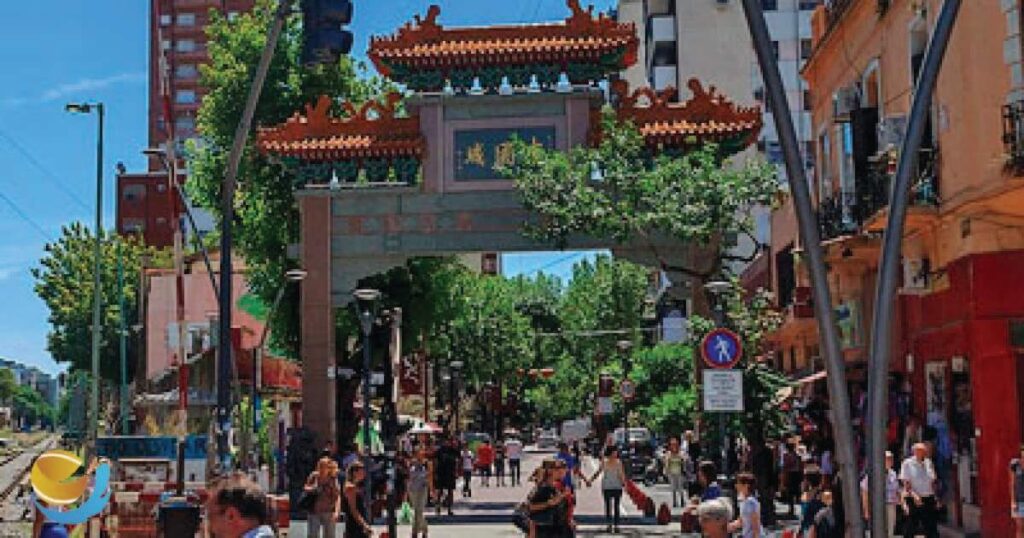
Description: Where to Stay in Buenos Aires
Belgrano is characterized by its tree-lined streets, historic mansions, and well-maintained parks. The neighborhood has a laid-back, community-oriented atmosphere with a variety of shops, cafes, and cultural institutions.
Its mix of old-world charm and modern conveniences makes it a versatile and attractive area for a wide range of visitors.
Attractions: Where to Stay in Buenos Aires
- Barrancas de Belgrano: A picturesque park designed by French-Argentine landscape architect Charles Thays, featuring lush greenery, walking paths, and a gazebo.
- Museo Histórico Sarmiento: A museum dedicated to the life and work of Domingo Faustino Sarmiento, a prominent Argentine educator, writer, and president.
- Chinatown (Barrio Chino): A bustling area within Belgrano offering Asian markets, restaurants, and cultural shops. It’s a great place to experience a different side of Buenos Aires’ cultural mosaic.
- Cabildo Avenue: A major commercial thoroughfare lined with shops, cafes, and cinemas, perfect for shopping and dining.
- Iglesia de la Inmaculada Concepción (La Redonda): An iconic church with a distinctive circular design, an architectural landmark in the neighborhood.
- Residential Streets: Beautiful, quiet streets with historic mansions and modern apartments, showcasing the neighborhood’s blend of architectural styles.
Who Should Stay Here: Where to Stay in Buenos Aires
- Families: The neighborhood’s safe, quiet streets, and abundance of parks make it ideal for families with children.
- Long-Term Visitors: Those planning an extended stay will appreciate Belgrano’s residential feel and array of local amenities.
- Nature Lovers: With its numerous parks and green spaces, Belgrano is perfect for those who enjoy outdoor activities and a tranquil environment.
- Cultural Enthusiasts: The neighborhood’s museums, historic sites, and cultural diversity offer plenty of opportunities for exploration and learning.
- Shoppers: Cabildo Avenue provides a vibrant shopping experience with a variety of stores and boutiques.
Summary: Where to Stay in Buenos Aires
Belgrano offers a serene and elegant environment with a mix of cultural and modern attractions. Its residential charm, combined with convenient urban amenities, makes it an ideal choice for families, long-term visitors, and those seeking a peaceful stay in Buenos Aires.
Whether you’re exploring the picturesque parks, delving into history at local museums, or enjoying the vibrant Chinatown, Belgrano provides a welcoming and diverse setting for your visit.
8. Villa Crespo
Villa Crespo is an up-and-coming neighborhood in Buenos Aires known for its authentic local vibe, artistic flair, and burgeoning dining scene. Located adjacent to the trendy Palermo district, Villa Crespo offers a more low-key and affordable alternative while still providing easy access to the city’s attractions.
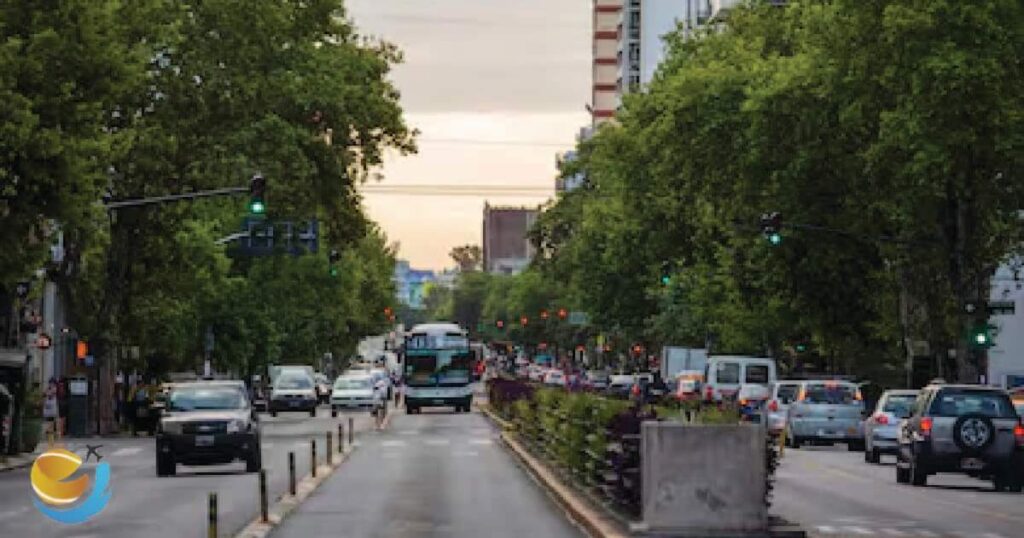
Description: Where to Stay in Buenos Aires
Villa Crespo is characterized by its mix of residential areas, commercial streets, and creative spaces. The neighborhood has a rich history, having been a working-class area that has evolved into a vibrant and diverse community.
Its growing popularity among young locals and expats has led to an influx of trendy cafes, bars, and boutiques, creating a lively and eclectic atmosphere.
Attractions: Where to Stay in Buenos Aires
- Avenida Corrientes: Known as the “Street that Never Sleeps,” this major avenue is lined with theaters, bookstores, and cafes, extending from the city center into Villa Crespo.
- Murals and Street Art: Villa Crespo boasts an impressive array of street art and murals, reflecting its artistic and bohemian spirit.
- Parque Centenario: A large public park offering green spaces, a lake, and a variety of recreational activities. It’s a popular spot for picnics, jogging, and outdoor concerts.
- Mercado de Villa Crespo: A local market where you can find fresh produce, artisanal products, and street food, providing an authentic taste of Buenos Aires.
- Boutiques and Designer Stores: The neighborhood is home to many independent fashion boutiques and designer stores, particularly around Calle Gurruchaga.
- Casa Brandon: A cultural center and LGBTQ+ community hub offering events, workshops, and performances, showcasing Villa Crespo’s inclusive and progressive atmosphere.
Who Should Stay Here: Where to Stay in Buenos Aires
- Budget Travelers: Villa Crespo offers more affordable accommodation options compared to its neighboring Palermo, making it ideal for those traveling on a budget.
- Young Travelers and Expats: The neighborhood’s vibrant, youthful energy and growing expat community appeal to younger travelers and those looking to immerse themselves in local culture.
- Art and Culture Enthusiasts: With its abundant street art, cultural centers, and creative spaces, Villa Crespo is perfect for those interested in the city’s contemporary art scene.
- Foodies: The emerging dining scene, featuring a mix of traditional Argentine cuisine and innovative eateries, makes Villa Crespo a great destination for food lovers.
- Authentic Experience Seekers: Travelers looking to experience a more local and less touristy side of Buenos Aires will find Villa Crespo’s genuine atmosphere appealing.
Summary: Where to Stay in Buenos Aires
Villa Crespo offers a vibrant, authentic, and affordable alternative to some of Buenos Aires’ more tourist-heavy neighborhoods. Its mix of artistic flair, diverse dining options, and local charm make it an attractive choice for a wide range of travelers.
Whether you’re exploring the lively Avenida Corrientes, admiring the street art, or relaxing in Parque Centenario, Villa Crespo provides a rich and immersive Buenos Aires experience.
9. Almagro
Almagro is a traditional neighborhood in Buenos Aires known for its rich cultural heritage, tango roots, and vibrant local atmosphere. It offers a mix of residential streets, historic landmarks, and artistic spaces, making it a hidden gem for travelers looking to experience authentic Porteño life.
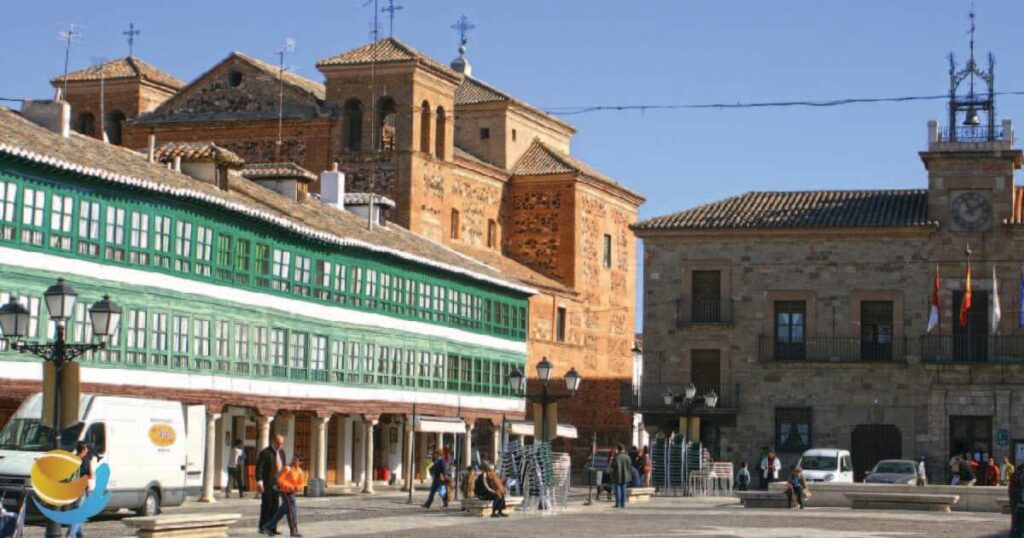
Description: Where to Stay in Buenos Aires
Almagro is characterized by its leafy streets, historic architecture, and sense of community. Once a working-class area, it has retained much of its local charm while also evolving into a hub for tango culture and artistic expression.
The neighborhood has a relaxed and unpretentious vibe, making it an inviting destination for those seeking an authentic Buenos Aires experience.
Attractions: Where to Stay in Buenos Aires
- Plaza Almagro: The main square of the neighborhood, surrounded by cafes, bars, and the iconic Almagro Market (Mercado de Abasto).
- Tango Venues (Milongas): Almagro is home to numerous milongas (tango dance halls) where you can experience traditional tango music and dance.
- Confitería Las Violetas: A historic cafe and pastry shop dating back to 1884, known for its stunning Belle Époque architecture and delicious pastries.
- Teatro 25 de Mayo: A cultural center hosting theatrical performances, concerts, and other events.
- Casa Museo Carlos Gardel: The former home of legendary tango singer Carlos Gardel, now a museum dedicated to his life and legacy.
- Street Art: Almagro features colorful murals and street art, adding to its artistic character.
Who Should Stay Here: Where to Stay in Buenos Aires
- Tango Enthusiasts: Almagro’s deep ties to tango culture make it an ideal destination for those passionate about the dance and its history.
- Art and Culture Lovers: The neighborhood’s artistic flair, cultural centers, and street art offer plenty of opportunities for exploration.
- Budget Travelers: Almagro provides more affordable accommodation options compared to touristy areas like Palermo or Recoleta.
- History Buffs: With its historic buildings and landmarks, Almagro offers insight into Buenos Aires’ past and cultural heritage.
- Food and Coffee Aficionados: The neighborhood is dotted with traditional cafes, restaurants, and markets where you can sample local cuisine and treats.
Summary
Almagro is a neighborhood steeped in tradition, where tango echoes through the streets and history permeates its landmarks. Whether you’re immersing yourself in the tango scene, savoring pastries at a historic cafe, or admiring vibrant street art, Almagro offers a genuine and captivating Buenos Aires experience.
It’s a neighborhood that invites you to slow down, explore, and embrace the authentic spirit of the city.
Tips for Choosing the Right Neighborhood
Choosing the right neighborhood is essential for maximizing your experience in Buenos Aires. Here are some tips to help you find the perfect neighborhood based on your preferences and travel style:
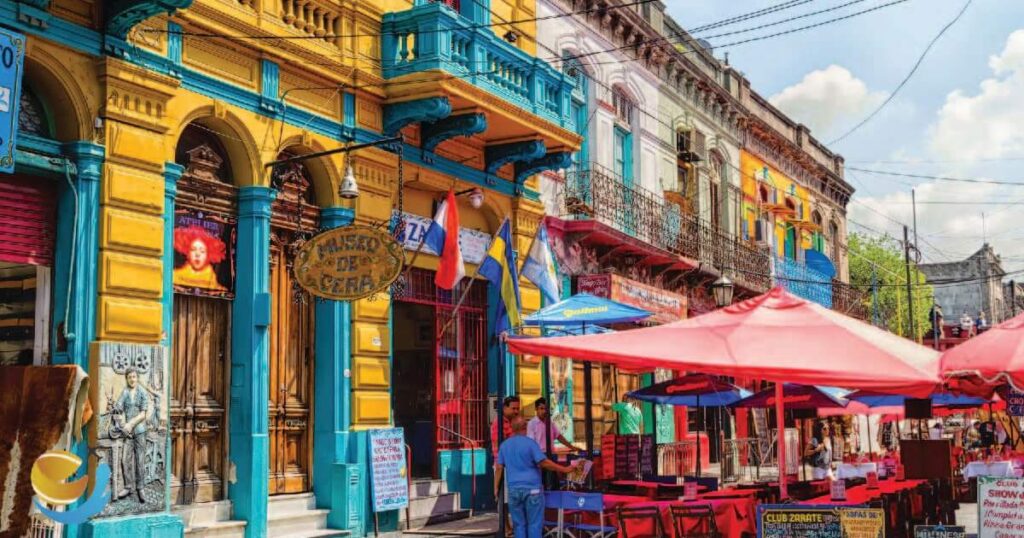
- Consider Your Interests: Think about what you want to experience during your trip. Are you interested in history and culture, nightlife, shopping, or outdoor activities?
- Research Neighborhoods: Learn about the different neighborhoods in Buenos Aires and their characteristics. Consider factors like atmosphere, attractions, safety, and proximity to the places you want to visit.
- Identify Your Priorities: Do you prioritize being close to tourist attractions, having a vibrant nightlife, or staying in a peaceful area?
- Budget Considerations: Keep your budget in mind when choosing a neighborhood. Some areas may offer more affordable accommodation options or dining choices than others.
- Transportation Accessibility: Check the transportation options available in each neighborhood. Consider whether you’ll need easy access to public transportation or if you prefer walking distance to attractions.
- Safety: While Buenos Aires is generally safe, some neighborhoods may have higher crime rates or be livelier at night. Research safety tips and choose a neighborhood where you feel comfortable.
- Ask Locals or Travelers: Reach out to locals or fellow travelers for recommendations. Online forums, travel communities, and social media can be great resources for getting insider tips.
- Personal Preferences: Do you like lively and trendy areas, or do you prefer quieter, residential neighborhoods?
- Stay Flexible: Be open to exploring different neighborhoods during your stay. You might find hidden gems or unexpected experiences in areas you hadn’t considered.
- Read Reviews: Look for reviews and recommendations from other travelers to get insights into their experiences staying in different neighborhoods.
- Trust Your Instincts: Choose a neighborhood that aligns with your instincts and feels right for your trip.
Remember that Buenos Aires is a city of diverse neighborhoods, each offering its own unique charm and experiences. By considering these tips, you can select the perfect neighborhood that suits your preferences and ensures a memorable stay in the Argentine capital.
Accommodation Options in Buenos Aires
When visiting Buenos Aires, you’ll find a wide range of accommodation options to suit every budget and travel style. Here are some popular choices:
Hotels: Where to Stay in Buenos Aires
- Luxury Hotels: Elegant hotels offering top-notch amenities, spas, fine dining, and impeccable service. Located in neighborhoods like Recoleta, Puerto Madero, and Palermo Chico.
- Boutique Hotels: Unique and stylish boutique hotels with personalized service and intimate atmospheres. Found in various neighborhoods, including Palermo and San Telmo.
- Mid-Range Hotels: Comfortable and well-equipped hotels at more affordable prices. Available throughout the city, offering good value for money.
Hostels: Where to Stay in Buenos Aires
- Backpacker Hostels: Budget-friendly accommodation popular among young travelers and backpackers. Often located in lively neighborhoods like Palermo and San Telmo, offering dormitory beds and private rooms.
- Hostels with Private Rooms: Hostels that offer private rooms with shared facilities, ideal for budget-conscious travelers who value privacy.
Apartments/Airbnb: Where to Stay in Buenos Aires
- Apartments: Renting an apartment is a great option for longer stays or for those who prefer a home-like environment. You can find apartments in various neighborhoods, offering flexibility and space.
- Airbnb: Airbnb offers a wide selection of apartments and homes across Buenos Aires, ranging from budget-friendly to luxury options, providing a local experience.
Boutique Accommodations: Where to Stay in Buenos Aires
- Apart Hotels: Combine the convenience of a hotel with the flexibility of an apartment, offering amenities like kitchenettes and living areas. Suitable for longer stays.
- Guesthouses and Bed & Breakfasts: Charming and intimate accommodations often run by locals, providing a personalized experience.
Residencies: Where to Stay in Buenos Aires
- Student Residences: Budget-friendly accommodations catering primarily to students and young travelers. Found in areas with universities, such as Recoleta and Palermo.
Short-Term Rentals: Where to Stay in Buenos Aires
- Temporary Rentals: Agencies and websites offer short-term rentals of furnished apartments, ideal for travelers seeking flexibility and independence.
Homestays: Where to Stay in Buenos Aires
- Staying with Locals: Experience local hospitality by staying with a host family. Provides cultural immersion and the opportunity to practice Spanish.
Serviced Apartments: Where to Stay in Buenos Aires
- Corporate Housing: Fully furnished apartments with amenities like housekeeping and utilities included, catering to business travelers and longer stays.
Eco-Friendly Accommodations: Where to Stay in Buenos Aires
- Eco-Hotels and Eco-Hostels: Accommodations focused on sustainability and environmental responsibility, found throughout the city.
Pet-Friendly Accommodations: Where to Stay in Buenos Aires
- Pet-Friendly Hotels and Apartments: Accommodations that welcome pets, allowing you to travel with your furry friends.
Regardless of your preference or budget, Buenos Aires offers a plethora of accommodation options to ensure a comfortable and enjoyable stay in the city. Make sure to book in advance, especially during peak seasons, to secure the best options for your trip.
Conclusion Of Where to Stay in Buenos Aires:
Choosing where to stay in Buenos Aires is an important decision that can greatly enhance your experience in this vibrant city. With its diverse neighborhoods and array of accommodation options, Buenos Aires caters to every type of traveler, from luxury seekers to budget-conscious adventurers.
From the historic elegance of Recoleta to the trendy streets of Palermo, each neighborhood offers its own unique charm and attractions. Whether you’re exploring the tango halls of San Telmo, enjoying the modern waterfront of Puerto Madero, or immersing yourself in the local culture of Villa Crespo, Buenos Aires has something for everyone.
When deciding on your accommodation, consider your interests, budget, and preferred atmosphere. Whether you opt for a luxury hotel, a cozy Airbnb apartment, or a budget-friendly hostel, there’s accommodation to suit every taste and need.
Whichever neighborhood you choose, be prepared to immerse yourself in Buenos Aires’ rich culture, delicious cuisine, and passionate way of life. With its captivating blend of history, art, and nightlife, Buenos Aires promises an unforgettable experience for every traveler.
Choose your neighborhood wisely, and get ready to explore the enchanting streets of Buenos Aires, where every corner tells a story and every moment is filled with excitement and possibility. ¡Buena suerte y buen viaje! (Good luck and happy travels!)
Related Articles:
Where to Stay in Cinque Terre: 5 Best Places
Best Time to Visit Machu Picchu: Complete Guide for Beginners
Best Waterfalls in Costa Rica: 9 Best Waterfalls in Costa Rica

